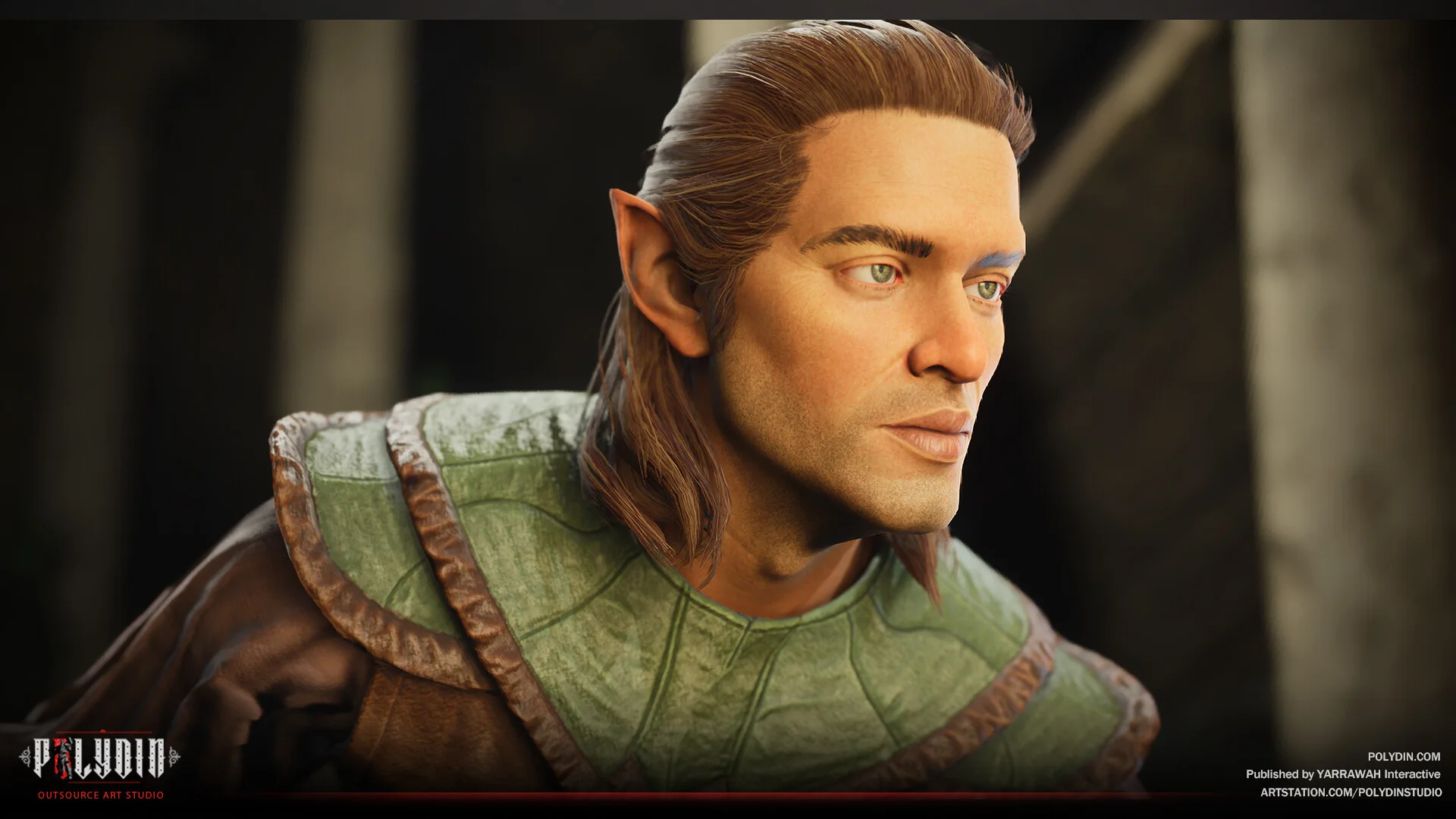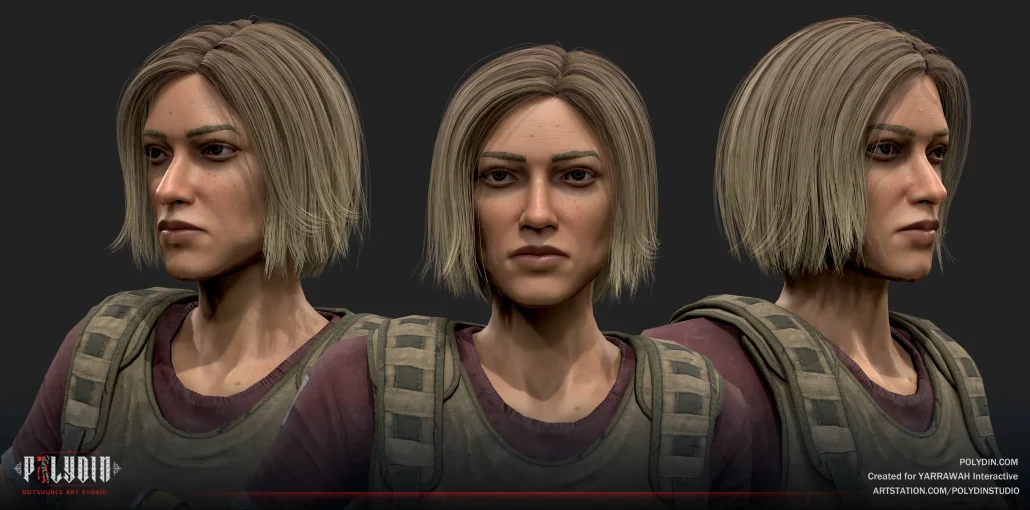Diversity has become a cornerstone in the vast landscapes of gaming, transforming virtual worlds into vibrant reflections of the real one. From the humble beginnings of pixels and sprites to the intricate realms of contemporary game art and design, the journey of diversity in gaming is one marked by evolution, challenges, and triumphs. This exploration delves into the multifaceted aspects of diversity within the gaming industry. From the nuanced portrayal of characters to the challenges faced in game development stages, we traverse the rich tapestry of gender, cultural representation, and sexuality in video games. Join us on a quest to unravel how game art and design address diversity, the pivotal role of representation, and the business case that underscores the importance of embracing the multitude of voices within the gaming sphere.
Evolution of Diversity in Gaming
The evolution of diversity in gaming is a fascinating journey that mirrors the ever-changing landscape of our real-world societies. Representation was limited in the early days of gaming, and characters often adhered to stereotypical norms. However, as the gaming industry expanded and diversified, so did the need for more inclusive narratives.
This evolution was spurred by a growing acknowledgment of the diverse player base and an understanding that games could be powerful platforms for fostering empathy and understanding. From the pixelated sprites of classic games to the lifelike characters of modern titles, the progression of diversity in gaming reflects a broader societal shift toward inclusivity, where game developers are increasingly committed to telling stories that resonate with a global audience.
The ongoing evolution of diversity in gaming serves as a testament to the industry’s willingness to embrace change, challenge stereotypes, and create experiences that resonate with players from all walks of life.
How Game Art & Design Addresses Diversity
The intersection of game design and game art is pivotal in addressing diversity within the gaming industry. Game developers and artists are not merely creators of virtual worlds; they are architects of narratives that reflect the diverse tapestry of the real world.
Artistic elements promote inclusivity and representation, including character design, settings, and storylines. Game art has evolved to break free from traditional stereotypes, offering a more nuanced portrayal of characters with diverse backgrounds, genders, and identities.
Artists and designers increasingly incorporate cultural and historical influences into their creations, ensuring a richer and more authentic gaming experience. Using diverse art styles inspired by various global traditions adds depth to virtual worlds and fosters a sense of cultural appreciation among players.
Moreover, character customization options empower players to express their own identities within the game, allowing for a more personalized and inclusive gaming experience. This shift toward inclusivity in game art and design is a response to social demands and a proactive effort to enrich storytelling in games and engage players on a deeper level.
In essence, diversity in game art and design is about crafting narratives that resonate with a broad audience, fostering empathy, and providing a platform for underrepresented voices to be heard and celebrated within the expansive realm of gaming.


Gaming Representation
Representation in gaming has become a pivotal aspect of the industry, influencing narratives, character development, and player experiences. This section delves into the multifaceted dimensions of gaming representation, exploring gender diversity, cultural and ethnic representation, and the portrayal of sexuality in video games.
Gender Diversity in Gaming
Gender diversity in gaming addresses the equitable inclusion of all genders in the gaming industry as creators and players. Historically, the gaming industry has been male-dominated. Still, efforts are being made to encourage and empower individuals of all genders to participate in game development and to create games that resonate with diverse audiences. It also involves challenging stereotypes and ensuring that games portray various gender identities.
Cultural and Ethnic Representation
Cultural and ethnic representation in gaming involves accurately and respectfully depicting a variety of cultures and ethnicities within video games. This aims to create a more inclusive and authentic gaming experience by showcasing diverse perspectives, traditions, and histories. Developers strive to avoid cultural appropriation and stereotyping, working towards meaningful representation that enriches storytelling and promotes cultural understanding.
Sexuality in Video Games
This aspect of diversity in gaming focuses on the portrayal of various sexual orientations and identities within video game narrative design and characters. It includes efforts to move beyond traditional and often stereotypical representations, fostering more nuanced and realistic depictions of diverse sexualities. The goal is to create an inclusive gaming environment where players of all sexual orientations feel seen and respected, contributing to a more accepting gaming community.
Challenges of Diversity in Games
Despite ongoing efforts to promote diversity in the gaming industry, several challenges persist:
- Stereotypes and Representation: Stereotypical portrayals of characters based on gender, ethnicity, or sexuality can perpetuate biases and hinder progress. Striking a balance between authenticity and avoiding harmful stereotypes remains challenging for developers.
- Underrepresentation: Many marginalized groups remain underrepresented in game development teams and the games themselves. Increasing diversity in the industry requires addressing systemic barriers and creating more inclusive environments.
- Lack of Inclusive Content: Some games may lack inclusive content, failing to represent a broad spectrum of experiences. This can alienate players and limit the potential for diverse storytelling.
- Online Harassment: Discrimination and harassment persist in online gaming communities. Toxic behavior can discourage individuals from diverse backgrounds, particularly women and minorities, from fully participating in the gaming culture.
- Unconscious Bias: Developers may unintentionally incorporate biases into their work due to unconscious beliefs or lack of awareness. Overcoming these biases requires ongoing education and a commitment to fostering diversity.
- Accessibility: Accessibility challenges, such as designing games for disabled players, can be overlooked. Creating games that cater to a diverse audience, including those with varying abilities, is a complex task that requires careful consideration.
- Industry Culture: The culture within the gaming industry itself can be resistant to change. Breaking down ingrained norms and promoting a culture of inclusivity is an ongoing challenge that involves both industry leaders and the broader gaming community.
Addressing these challenges requires a collective effort from developers, publishers, and the gaming community to foster an environment that values and celebrates diversity in all its forms.


Game Development and Diversity
Diversity in game development involves promoting inclusivity in the teams that create games. Here are key aspects related to game development and diversity:
- Team Diversity: Encouraging diversity within game development teams fosters creativity and brings various perspectives. Diverse teams can lead to more innovative game concepts, storylines, and characters.
- Inclusive Hiring Practices: Game development studios must adopt inclusive hiring practices to attract talent from different backgrounds. This includes addressing biases in the hiring process and actively seeking candidates from underrepresented groups.
- Representation in Leadership Roles: Diverse representation at all levels of game development, including leadership roles, is essential. Individuals from diverse backgrounds in decision-making positions ensure a more inclusive approach to game design and development.
- Accessible Work Environments: Creating work environments that accommodate diverse needs is vital. This involves considering factors such as flexible working hours, inclusive policies, and accessible facilities to ensure that everyone can contribute effectively regardless of background or ability.
- Training and Education: Providing training and educational opportunities that are accessible to a wide range of individuals can help bridge gaps in skills and knowledge. This can include mentorship programs, workshops, and initiatives to support underrepresented groups in gaining entry into the game development field.
- Diversity in Storytelling: Diverse game development teams are more likely to create games that authentically represent a variety of experiences. This extends to storytelling, character development, and exploring diverse themes within the gaming narrative.
- Community Engagement: Game developers should actively engage with the gaming community to understand diverse player perspectives. This involves listening to feedback, conducting surveys, and participating in discussions to ensure that games resonate with a broad audience.
The industry can create more inclusive and representative games that appeal to various players by addressing diversity within the game development process. It also contributes to breaking down barriers and fostering a welcoming environment for individuals of all backgrounds within the gaming community.
The Business Case for Diversity
Diversity in the gaming industry is not just a matter of social responsibility; it also makes strong business sense. Here are key aspects of the business case for diversity:
- Market Expansion: Diverse game representation can expand the market by attracting a broader audience. Games that resonate with players from various backgrounds, ethnicities, genders, and orientations have the potential to capture a more extensive and diverse player base.
- Innovation and Creativity: Diversity in game development teams fosters innovation and creativity. Different perspectives lead to the creation of unique and novel game concepts, mechanics, and storytelling approaches. This diversity of thought is a powerful driver of creativity within the industry.
- Global Appeal: As the gaming industry becomes increasingly global, having a diverse workforce enables game developers to create content that reflects players’ cultural nuances and preferences worldwide. This global appeal can result in more relatable and appealing games to diverse audiences.
- Reduced Bias in Game Design: Diverse teams are better equipped to identify and address biases in game design. This includes avoiding stereotypes, challenging cultural appropriation, and ensuring that games are inclusive and respectful of all players.
- Brand Reputation: Companies that prioritize diversity and inclusivity in their games and workplaces tend to build positive brand reputations. Gamers often appreciate and socially responsible support companies, leading to increased brand loyalty.
- Talent Attraction and Retention: A commitment to diversity can make game development studios more attractive to a wider talent pool. This helps recruit diverse talent and contributes to retaining employees by creating an inclusive and supportive work environment.
- Adaptability to Changing Trends: The dynamic gaming landscape and diversity positions companies to adapt to changing trends. Being attuned to diverse player preferences allows developers to create games that align with evolving market demands.
By recognizing the business advantages of diversity, game development studios can contribute to a more inclusive industry and position themselves for long-term success in an ever-evolving and competitive market.


The Most Diverse Video Games
Several video games have stood out for their commitment to diversity, incorporating inclusive characters, storylines, and representations. Here are some notable examples:
- The Last of Us Part II (2020): This critically acclaimed action-adventure game features Ellie, a strong and complex LGBTQ+ protagonist. The game explores themes of identity, revenge, and relationships in a post-apocalyptic world.
- Life is Strange Series (2015-2021): Known for its narrative-driven gameplay, the Life is Strange series addresses various social issues, including mental health, bullying, and LGBTQ+ representation. The games prioritize character development and choices that impact the storyline.
- Watch Dogs 2 (2016): Set in a fictionalized version of the San Francisco Bay Area, Watch Dogs 2 features a diverse cast of characters, including the main protagonist, Marcus Holloway, who is African American. The game tackles themes of hacking, surveillance, and corporate greed.
- Assassin’s Creed Valhalla (2020): This installment of the long-running Assassin’s Creed series embraces diversity by allowing players to choose the gender of the main character, Eivor, and explore a rich historical setting with a multicultural cast.
- Dishonored: Death of the Outsider (2017): This standalone expansion to the Dishonored series features Billie Lurk, a disabled and queer protagonist. The game incorporates themes of revenge, redemption, and the consequences of supernatural powers.
- Tell Me Why (2020): Developed by Dontnod Entertainment, Tell Me Why is notable for featuring a transgender protagonist, Tyler Ronan. The game explores themes of family, memory, and identity.
- Overwatch (2016): This team-based multiplayer first-person shooter is celebrated for its diverse cast of characters, representing various ethnicities, genders, and abilities. Each character in Overwatch brings a unique set of skills to the game.
- Gone Home (2013): A pioneering title in the narrative exploration genre, Gone Home tells the story of a young woman discovering her sister’s journey of self-discovery. The game addresses LGBTQ+ themes and family relationships.
These games showcase the industry’s progression toward more inclusive narratives and diverse representations, contributing to a gaming landscape that reflects the richness and diversity of the real world.
Conclusion
The evolution of diversity in gaming represents a pivotal and ongoing transformation within the industry. From addressing gender stereotypes and embracing cultural nuances to championing LGBTQ+ representation, the gaming landscape has become more inclusive and reflective of the diverse player base. While challenges persist, game developers increasingly know the importance of fostering diverse narratives and characters.
This commitment not only enriches the gaming experience for players but also contributes to a broader cultural shift. As the industry continues to prioritize diversity, it becomes a powerful tool for fostering empathy, understanding, and connection, proving that gaming is not just about entertainment but also a platform for positive social change. Embracing diversity is not only a moral imperative but a strategic move ensuring the gaming world’s longevity and relevance in an ever-changing global context.


